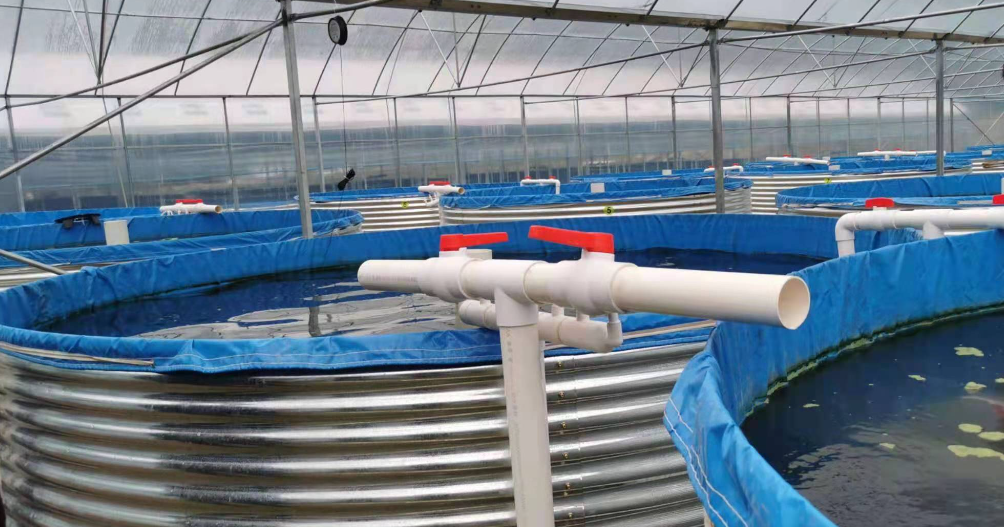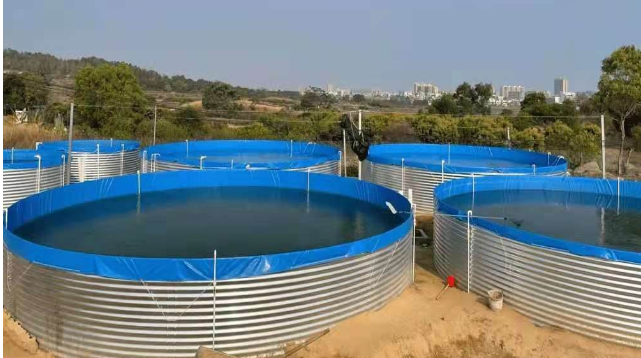Tilapia Farming
Tilapia (Tilapia), also known as African crucian carp, is native to Africa, and it is a tropical fish throughout the African continent, the Middle East, and the coast of Daliangzhi. Temperature is an extremely important condition for the survival and growth of tilapia. The living water temperature of tilapia is 8-40°C, the lowest critical temperature is 6°C, the highest critical temperature is 42°C, and the optimum growth water temperature is 27-30°C. Tilapia inhabits the middle and lower layers of water bodies, and is an omnivorous fish dominated by aquatic plants. It has a wide appetite, strong adaptability to the environment, good disease resistance, high population yield, delicious meat, and a large demand in the international market. It is one of the most important fine varieties in aquaculture.
3. Breeding technology
The key points of tilapia culture technology are mainly in three aspects: water quality control, feed quality and feeding methods, and disease prevention and control.
1. Water quality
Water quality control mainly includes testing and water quality regulation. The factors affecting the change of water quality are: water source, water exchange volume, oxygenation facilities, stocking density, fertilization, feeding amount, bottom quality, etc. The water quality requirements are as follows:
(1) Dissolved oxygen: 3-7mg/L. Although tilapia can withstand hypoxia below 1mg/L, when the dissolved oxygen is lower than 3mg/L for a long time, the state of the fish will be abnormal and prone to disease. In pond culture, dissolved oxygen in water fluctuates day and night. Under normal weather conditions, the highest point of dissolved oxygen appears at 2-3 noon, and the dissolved oxygen in the upper layer is mostly in a supersaturated state, and the lowest point is around 3 am. If it is too deep, the bottom of the pool may suffer from hypoxia during the day.
(2) Transparency: Normally, the transparency of water is determined by the amount of plankton. Because tilapia can utilize and digest phytoplankton very well, therefore, a certain concentration should be maintained in the aquaculture water body, especially in the early stage of aquaculture, if the water quality is too clear, it is best to apply inorganic fertilizers to keep the transparency of the water at 30-40cm.
(3) Water temperature: The growth temperature is 15-32°C; the suitable greenhouse temperature is 26-32°C; the optimum temperature is 28-30°C. Tilapia is kept below 10°C for a long time, and it is easy to freeze to death. In addition, fish are also sensitive to temperature differences. When releasing seedlings, the temperature difference will not exceed 2°C.
(4) Salinity: The normal requirement is 10%, when it is 10-25%, the growth rate will slow down. 30-40%, it is easy to get sick.
(5) Ammonia nitrogen: 0.1~0.3mg/L. When the ammonia nitrogen is too high (greater than 1mg/L), it is useless no matter how high the dissolved oxygen is.
(6) Alkalinity (CaC03): 100-200mg/L; hardness 30-150mg/L; pH value: 6.8-8.0; under normal circumstances, a comprehensive monitoring and evaluation of the water source should be carried out before breeding. For farmers, it is necessary to frequently measure water quality conditions such as water temperature, transparency, Ph value, and dissolved oxygen. Alkalinity and hardness should also be tested if possible. In addition, during the breeding process, it is necessary to maintain the stability of the water quality. When changing the water, do not drain and irrigate in large quantities, change it less often, and do not have too much difference between the pond water and the new water.
2. Feed and feeding
Tilapia has a wide range of food habits and can eat almost all commercial feeds, such as bran, cakes, aquatic and terrestrial plants and animal feeds (such as earthworms, fly maggots, small insects, etc.), which have a wide range of feed sources. Inexpensive. However, in order to improve the utilization rate of feed, reduce water pollution, and speed up growth, especially in semi-intensive and intensive culture ponds, compound feed with low feed coefficient and good quality should be fed, and natural bait (phytoplankton with silicon) should be cultivated. algae, green algae as well, can also ingest blue-green algae). If the feed cannot be eaten within 15 minutes, then the next feeding is suspended until the fish eat normally. Set up a feed table by the pond, and the amount of feed should be based on the data of feeding, and make appropriate adjustments according to fish dynamics, weather conditions, water temperature, and water quality. Feeding should not be too fast or too slow. Feeding too fast will lead to waste of feed and excessive dirt. Feeding too slow will cause fights between species of fish, which may easily cause damage to fins and eyes. In addition, improper feeding methods can cause large differences in group size. Feed should be faster at the beginning, then slow down, and observe the behavior of the fish. On the one hand, the amount of feed should be appropriately increased or decreased according to the appetite, and on the other hand, whether the fish has abnormal behavior (such as head shaking, floating head, abnormal swimming, etc.). Each feeding time is 15 to 30 minutes, and the amount of each feeding and the eating situation of the fish should be recorded and kept in detail.
Feed feeding should achieve "four determinations", that is, timing: the number and time of daily feeding should be determined, and the time error of feeding should not exceed 30 minutes; Feed point, do not put all the feed on the feed table, as the fish population increases, the feeding range should gradually expand near the feed table, and the feed should be spread as far as possible. If the pond is large, tilapia can be domesticated by knocking on buckets, hitting water, clapping hands, etc. Quantification: Except for special circumstances such as rainy days, sultry weather, and abnormal fish activities, the daily feeding amount should be relatively stable. As the fish grows, the amount of feed should gradually increase, and the difference should not be too large; qualitative: the feed should maintain good quality, and do not feed with peculiar smell or deterioration. At the same time, after selecting a brand of feed, except for special circumstances, Do not switch to other brands of feed at will.
3. Growth rate and feed list
When the average water temperature is 26°C, the water is rich in plankton, and the breeding density is 1500-2500 fish/mu, the survival rate of fish can reach more than 96%. First, measure the water temperature at a water depth of 0.5 to 1 meter, and then calculate the actual feeding amount based on the estimated fish species weight. If the water temperature is below 15°C and above 32°C, stop feeding.


Tel.: +86 17864390557






